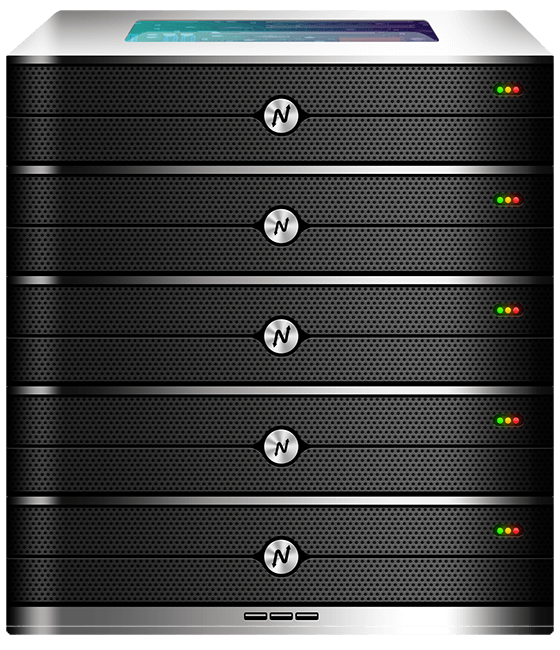Choosing the right platform for your Python project matters more than ever. Whether you are launching a personal portfolio, a Django eCommerce site, or a Flask API for a mobile app, performance, security, and predictable scaling determine user experience and business outcomes. That is why python web hosting is a crucial decision for developers and small businesses around the world.
XenaxCloud is an India-born global hosting brand that delivers robust international infrastructure and managed services. Indian data centers give strong value through cost-effectiveness, low latency across Asia, compliance and security features, and clear upgrade paths — making them an excellent foundation for globally distributed Python deployments. In this post we explain how to choose the best python web hosting, compare Indian servers with other regions, show real-world use cases, and recommend XenaxCloud plans that fit typical B2C needs.
- 4 GB RAM
- 40 GB SSD Storage
- 2 TB Bandwidth
- 1 IPV4 & IPV6
Why Python Web Hosting Matters for B2C Projects

Python powers many modern web apps because of its speed of development, extensive libraries, and web frameworks like Django and Flask. But a great framework is just the start. Hosting affects page load times, API response, uptime, and security — all of which shape conversions and retention.
Good python web hosting gives you:
- Native or container-friendly environments for Django, Flask, FastAPI.
- Enough CPU and RAM for background tasks and concurrent requests.
- Fast I/O (SSD/NVMe) for database and file operations.
- Reliable networking and DDoS protection to avoid outages.
For B2C sites, even small latency differences matter. Choosing a host with low-latency routes to your audience improves conversions and reduces friction for customers on checkout, sign-up, or streaming pages.
How to Choose the Right Python Hosting Plan
Choosing a hosting plan for Python involves balancing resources, control, cost, and ease of maintenance. Start by answering three questions: expected traffic, runtime needs (uWSGI, Gunicorn, ASGI), and whether you need managed support.
For beginners and low-traffic sites, shared or entry VPS plans work well. For example, XenaxCloud’s KVM VPS 1 — 2 Vcore CPU, 8GB RAM, 40GB Storage, 2TB Bandwidth, $5.99 provides a stable sandbox to deploy Django or Flask apps with decent headroom.
If you expect sudden traffic spikes or plan production workloads, choose a larger VPS or a dedicated instance. The KVM VPS 3 — 8 Vcore CPU, 16GB RAM, 70GB Storage, 4TB Bandwidth, $14.39 from the Speed KVM line offers a good mix of CPU and memory for multi-worker Gunicorn setups or asynchronous FastAPI services.
Key selection tips:
- CPU and RAM: prefer more vCPU and RAM for concurrent users and background jobs.
- Storage: use SSD/NVMe for databases and caches to avoid I/O bottlenecks.
- Bandwidth: factor in expected data transfer (media, downloads, API traffic).
- Control: choose root access (VPS) if you need custom stacks; choose managed if you prefer hands-off maintenance.
If you want to explore XenaxCloud’s VPS options directly, see their VPS server page for configuration details and provisioning times: https://xenaxcloud.com/vps-server/.
Speed, Uptime, and Security Advantages
Performance for python web hosting depends on both the application stack and the underlying server hardware and network. Modern VPS and KVM instances with NVMe storage and 1–10 Gbps uplinks reduce latency and boost throughput.
Examples of measurable improvements:
- Replacing HDD with NVMe lowers database query latency and improves page load times.
- Adding worker processes (Gunicorn/uvicorn) across multiple vCores improves concurrency for web APIs.
- Enabling HTTP/2 and Gzip reduces payload size and speeds initial page loads.
Uptime and security are equally important. XenaxCloud operates in Tier III-style environments with redundant power and networking, along with DDoS mitigation layers. For production Python apps, pair hosting with managed backups and automatic security patching.
Suggested place to add an outbound benchmark link: after this section, include a link to a reputable hosting performance benchmark site (for example, HostingAdvice or GTmetrix) to show independent server and CDN performance metrics.
Comparison: Indian Servers vs US, Canada, Germany, UAE
Below is a clear technical comparison that helps you understand regional strengths for hosting Python applications. Pricing is excluded on purpose to keep the focus on technical and operational benefits.
| Region | Network Latency Strength | Best For | Compliance & Privacy | Support & Provisioning |
|---|---|---|---|---|
| India | Low latency to Asia, competitive global routes | Asia-Pacific traffic, cost-conscious scaling | Strong local compliance; improving global certifications | 24/7 support, fast provisioning |
| US | Excellent peering across North America | North American customers, large-scale SaaS | Mature compliance frameworks | 24/7 support, extensive carrier options |
| Canada | Low latency to North America and good global routes | Ecommerce, regulated industries, privacy-focused apps | Strong privacy laws; attractive for data residency | 24/7 support, reliable provisioning |
| Germany | Optimized for Europe | European audience, GDPR-sensitive services | Very strong privacy and compliance | Business hours plus local-language support |
| UAE | Good for Middle East; variable international peering | Regional enterprise and government services | Growing compliance standards | Localized support, sometimes limited carriers |
This comparison shows why Indian servers are a viable global option: they deliver cost-efficient performance for Asia while maintaining competitive routes worldwide. For B2C projects with mixed audiences, combining India-based staging or regional caches with a Canadian or US edge presence often yields the best balance.
Real-World Use Cases for Python Web Hosting
Small eCommerce Store (Django)
A local store selling physical goods can run a Django app with PostgreSQL on a VPS. Use multiple Gunicorn workers, Redis for session caching, and Nginx as a reverse proxy to serve static assets. The KVM VPS 3 — 8 Vcore CPU, 16GB RAM, 70GB Storage, 4TB Bandwidth, $14.39 provides headroom for peak shopping hours and background order processors.
SaaS Product (FastAPI)
A lightweight SaaS with many API calls benefits from asynchronous frameworks like FastAPI. Deploy on a multi-core VPS, use uvicorn with multiple workers, and adopt horizontal scaling via container orchestration if traffic grows. For earlier growth stages, KVM VPS 2 — 4 Vcore CPU, 8GB RAM, 50GB Storage, 2TB Bandwidth, $8.39 balances cost and performance.
Content Platform or Blog (Flask)
For content-focused sites with moderate traffic, a small managed VPS or shared plan works. Move media to object storage, enable CDN, and schedule database backups. XenaxCloud’s shared plans such as Silver — 1 Website, 15GB Storage, 100GB Bandwidth, $1.79 are fine for bootstrapped blogs before upgrading.
Machine Learning Inference API
Lightweight inference endpoints need strong CPU and RAM. Use isolated instances with sufficient RAM and SSD I/O. The Gold KVM VPS 5 — 16 Vcore CPU, 32GB RAM, 100GB Storage, 8TB Bandwidth, $25.19 is well suited when models are optimized and served in production.
Each example shows how CPU, memory, storage type, and bandwidth shape the recommended plan.
Why Indian Servers Can Handle Global Traffic Efficiently
Indian network infrastructure has rapidly matured. Peering with international carriers, multiple submarine cable landings, and improvements in backbone networks mean Indian servers can serve global audiences with competitive latency when combined with CDN caching and smart routing.
Technical reasons:
- Shorter physical routes to Asian and Middle Eastern users cut RTT for those regions.
- Modern IXPs in India improve peering and reduce transit hops to major clouds and CDNs.
- Combined with a global CDN, edge caching reduces round-trips for distant users, delivering near-local performance.
Operationally, Indian data centers offer strong value: quick provisioning, flexible resource upgrades, and around-the-clock support. For B2C businesses, this means lower hosting costs and the ability to invest savings into marketing or feature development.
Scalability Options for Startups and Agencies
Scalability means both vertical (bigger machine) and horizontal (more machines). Good python web hosting should let you do both.
Startups often begin with a VPS and scale vertically by increasing vCores and RAM. XenaxCloud’s KVM and Gold KVM VPS lines make vertical scaling straightforward. For example, a natural upgrade path might be Speed KVM VPS 3 → KVM VPS 3 → Gold KVM VPS 5 as traffic and concurrency grow.
Agencies and midsize teams may prefer horizontal scaling: multiple application servers behind a load balancer, separate managed databases, and object storage for media. Use containerization (Docker) to make deployments repeatable and autoscaling-friendly.
Recommended plan examples for different needs:
- Developer trial / low traffic: KVM VPS 1 — 2 Vcore CPU, 8GB RAM, 40GB Storage, 2TB Bandwidth, $5.99.
- Growing startup: Speed KVM VPS 3 — 8 Vcore CPU, 16GB RAM, 70GB Storage, 4TB Bandwidth, $14.39.
- Agency / production-scale: Gold KVM VPS 5 — 16 Vcore CPU, 32GB RAM, 100GB Storage, 8TB Bandwidth, $25.19.
These plans provide clear upgrade paths that align with standard DevOps practices and cost control.
FAQ
What is the difference between Indian VPS and foreign VPS?
Indian VPS typically offers lower latency to Asian users and competitive pricing, while foreign VPS may be slightly closer to Western audiences and meet different regulatory needs.
Can Indian servers handle global website traffic?
Yes, with proper CDN use, peering, and routing strategies Indian servers can efficiently serve traffic worldwide.
Is Indian hosting cost-effective for international users?
Indian hosting often provides excellent value, allowing international users to reduce infrastructure costs without sacrificing performance.
How reliable is XenaxCloud hosting?
XenaxCloud offers enterprise-grade infrastructure, 24/7 monitoring, and a SLA-backed approach to ensure high reliability.
How to choose the right server for my business?
Assess expected traffic, concurrency, storage needs, and whether you need managed support; then match those to a VPS or dedicated plan.
Conclusion
Choosing the right python web hosting platform sets the stage for faster launches, better user experience, and predictable growth. XenaxCloud pairs India’s cost-efficient, rapidly maturing infrastructure with global routing and managed services to create a compelling option for B2C developers and small businesses.
For most Python projects we recommend starting with a VPS tier that suits expected concurrency and memory needs. Good candidate plans from XenaxCloud are KVM VPS 3 — 8 Vcore CPU, 16GB RAM, 70GB Storage, 4TB Bandwidth, $14.39 for growing apps and Gold KVM VPS 5 — 16 Vcore CPU, 32GB RAM, 100GB Storage, 8TB Bandwidth, $25.19 for agencies or production-grade workloads. If you prefer an initial low-cost entry, KVM VPS 1 — 2 Vcore CPU, 8GB RAM, 40GB Storage, 2TB Bandwidth, $5.99 is an excellent starting point.
XenaxCloud also offers quick provisioning, 24/7 support, and a 15-day money-back guarantee so you can test configurations risk-free. Check the latest offers at the XenaxCloud Offers Page to find current discounts and promotions: https://xenaxcloud.com/offers.
Ready to deploy your Python app? Choose XenaxCloud’s VPS offerings for reliable, scalable, and secure python web hosting today and experience the difference in performance and support. Start now and benefit from the 15-day money-back guarantee.






